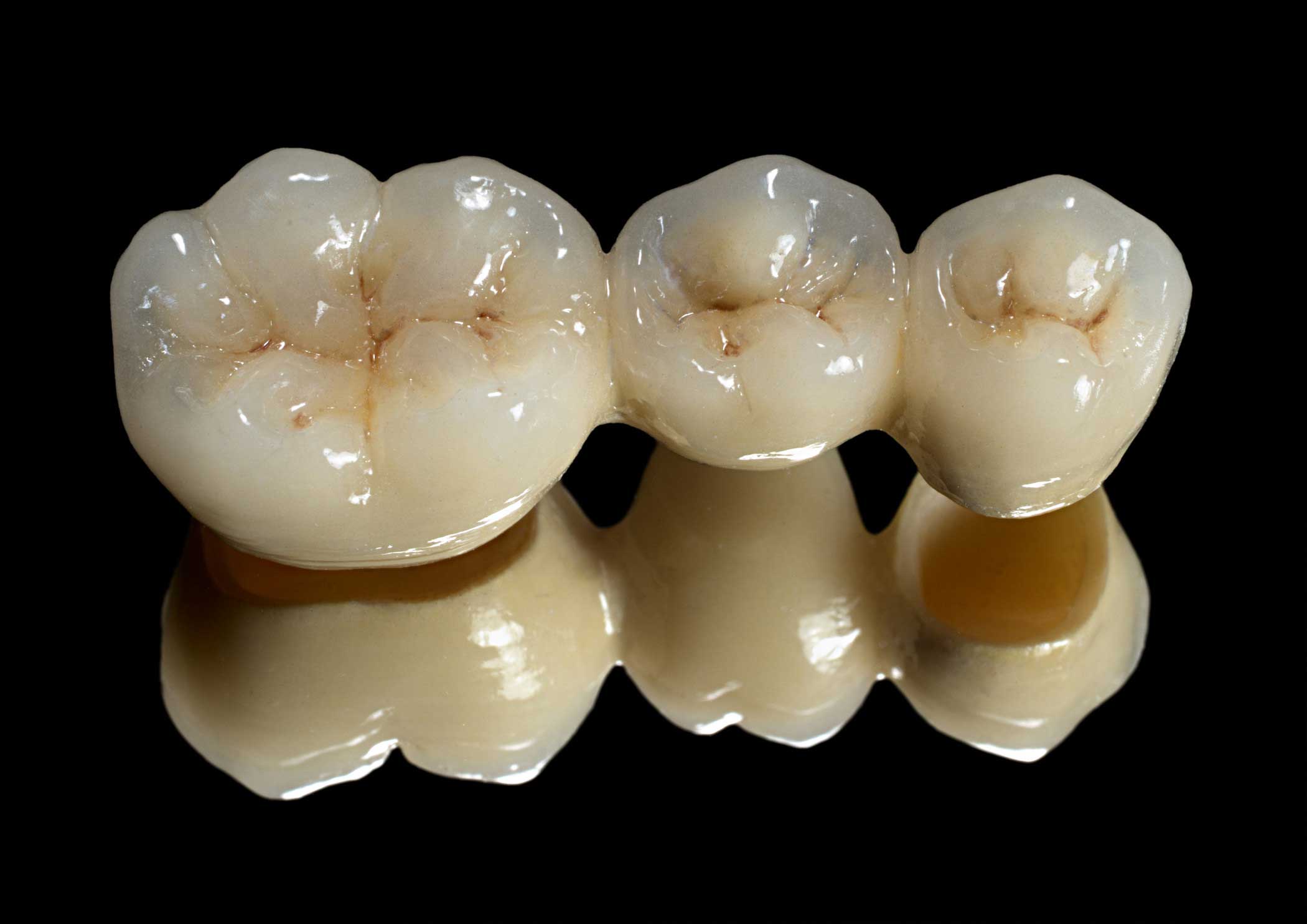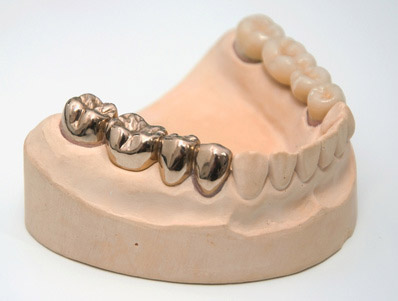
What Are Crowns?
A crown is a restoration that covers, or “caps,” a tooth to restore it to its normal shape and size, strengthening and improving the appearance of a tooth. Prosthetic crowns are made of metal, porcelain fused to metal substrates, or new all-white restorative materials. Crowns are necessary when a tooth is generally broken down and fillings won’t solve the problem. If a tooth is cracked, a crown holds the tooth together to seal the cracks so the damage doesn’t get worse. Crowns are also used to support a large filling when there isn’t enough of the tooth remaining, attach a bridge, protect weak teeth from fracturing, restore fractured teeth, cover badly shaped or discolored teeth or protect a root-canal filled tooth with compromised strength.

How is a crown placed?
The tooth is numbed and prepared for the crown by removing any decay or weakened areas. The remaining tooth structure is then reshaped to meet proper crown preparation design. If necessary, a restorative material, usually a composite resin, is added to the remaining tooth structure to ensure that the prosthetic crown will have a good foundation. This procedure is called a “build-up.” After the tooth is prepared, an impression of teeth and gums is made and sent to the lab for the crown fabrication. On the next visit, the dentist cements the permanent crown onto the tooth.During the second appointment,the new crown is placed on the tooth. Adjustments may be required to exact the perfect fit, so that the crown will feel comfortable in the mouth and will conform to the bite. When the crown fits seamlessly and contacts the neighboring teeth correctly, the crown is cemented on the tooth.

Will it look natural?
Yes. The dentist’s main goal is to create crowns that look like natural teeth. That is why dentists take an impression. To achieve a certain look, a number of factors are considered, such as the color, bite, shape, and length of your natural teeth. Any one of these factors alone can affect your appearance.If you have a certain cosmetic look in mind for your crown, discuss it with your dentist at your initial visit. When the procedure is complete, your teeth will not only be stronger, but they may be more attractive.
What is the difference between a cap and a crown?
There is no difference between a cap and a crown.
How long do crowns last?
Crowns should last approximately 8-10 years. However, with good oral hygiene and supervision most crowns will last for a much longer period of time. Some damaging habits like grinding your teeth, chewing ice, or fingernail biting may cause this period of time to decrease significantly.
How should I take care of my crowns?
To prevent damaging or fracturing the crowns, avoid chewing hard foods, ice or other hard objects. You also want to avoid teeth grinding. Besides visiting your dentist and brushing twice a day, cleaning between your teeth is vital with crowns. Floss or interdental cleaners (specially shaped brushes and sticks) are important tools to remove plaque from the crown area where the gum meets the tooth. Plaque in that area can cause dental decay and gum disease.Regularly scheduled examinations and hygiene appointments must be adhered to, or the same bacterial assault which causes decay and makes dental care necessary may cause the restorations to fail.

